After discovering that Iris’ picture-perfect cottage from the movie ‘The Holiday’ was merely a folly constructed in a couple of weeks and immediately pulled down after filming, I feared I might never get to stay in such a ‘chocolate box’ cottage. That was until I discovered ‘The Cottage’ in the tiny village of Branxton in the Borders.
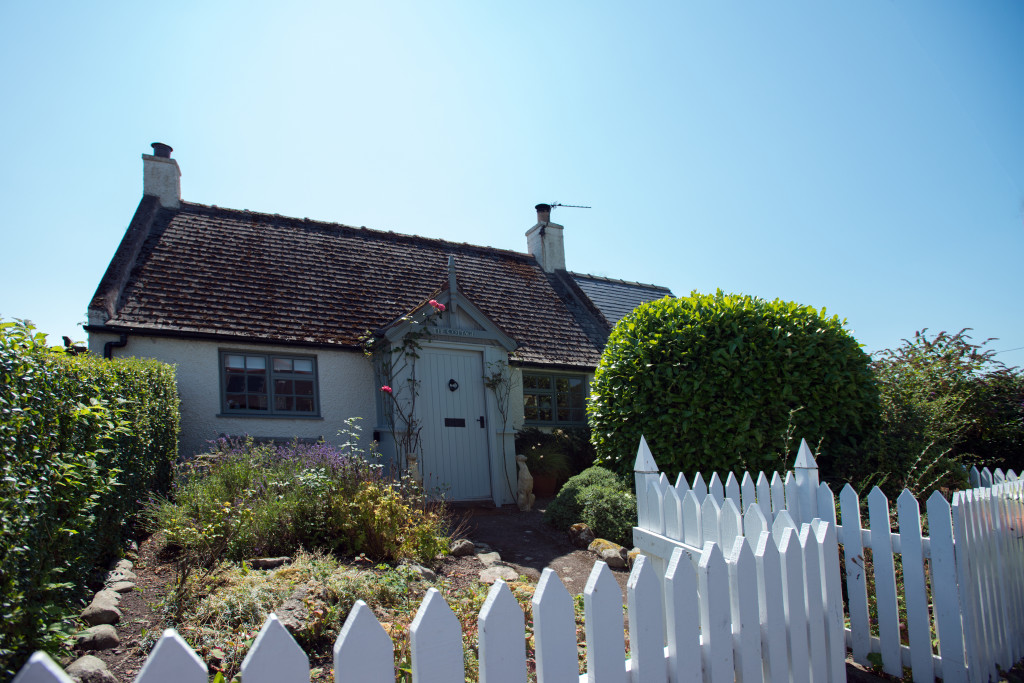
The Cottage, Branxton 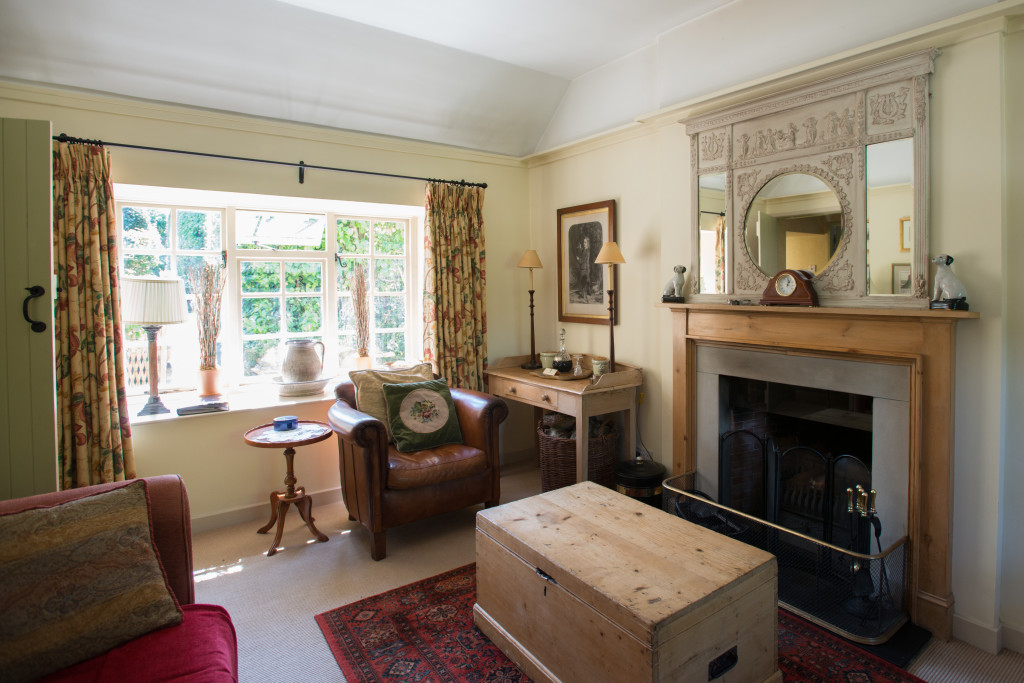
The lounge at The Cottage
It may be different in architectural style to the movie star – but this country cottage has just as much charm. There’s a white picket fence, a cottage garden and a spectacular Summer House and, best of all, it’s authentic – and available as a holiday let with Northumberland and Scottish Border specialists, Crabtree and Crabtree.
Opening the gate and walking down the garden path was a real thrill: what a lovely place to come home to at the end of the day.
The cosy lounge boasts a real fire, squishy sofa and a leather armchair. It’s just the sort of place where being snowed in would be an absolute pleasure. Not that snow was a problem while we were there for we enjoyed some gorgeous weather and even did a spot of sunbathing in the ultra-private south-facing garden.
All our dining was al fresco, alternating between the patio in the morning and a more shaded area for supper. But there’s a separate dining room in the cottage should you need one.
The garden overlooks the Flodden battlefield: the site of the bloody battle between the armies of James IV of Scotland and Thomas Howard, Earl of Surrey on 9th September 1513. On our first visit, the site was shrouded in mist and as we trod the battlefield trail towards the granite memorial cross, reading the unfolding timeline of events, I shivered more than once.

It’s often said that the imagination can be scarier than anything else and I for one found the illustrated boards and bite-sized chunks of information at each point sent my imagination into overdrive. Tales of how the men got bogged down in mud at the bottom of the hill and how the Scottish army (and at least 500 French mercenaries fighting with them) were out-flanked by the English, with the grisly result that at the end of three hours’ of battle, between 7,000 and 11,000 Scots lay dead (including King James) and there were between 1,000 and 4,000 English casualties.
Standing there, on the spot where this happened, reading this information, it was easy to imagine the roar of the soldiers and the clash of swords as so many were slain. It was simultaneously sad and moving.
This was my first visit to an Ecomuseum (which is not surprising when you learn that The Flodden 1513 Ecomuseum is the first in England) but it’s a concept I found enthralling and the execution of this one was exceptional.
An Ecomuseum is a community-led initiative which links attractions around a theme. The Flodden 1513 Ecomuseum links over 40 sites and traditions such as the border Ride Outs and the bagpiping tune of Floo’ers O’ The Forest. One of the sites is in Branxton village: the world’s smallest Tourist Information Centre, which is an ingeniously re-purposed red telephone box.
On a sunny day, the battlefield reverts to a great walking trail and, as The Cottage is dog-friendly, it provides a great start to any dog walk right from the doorstep.
If you are a fan of places of historic interest, then the area around Branxton and Cornhill on Tweed is a ‘must see’: there is nearby Twizel Bridge and the 18th Century folly of Twizel Castle and a way-marked walk along the banks of the Till to the Tweed. Other ‘must dos’ whilst in the area are the picturesque villages of Ford and Etal, and Hatherslaw Mill.
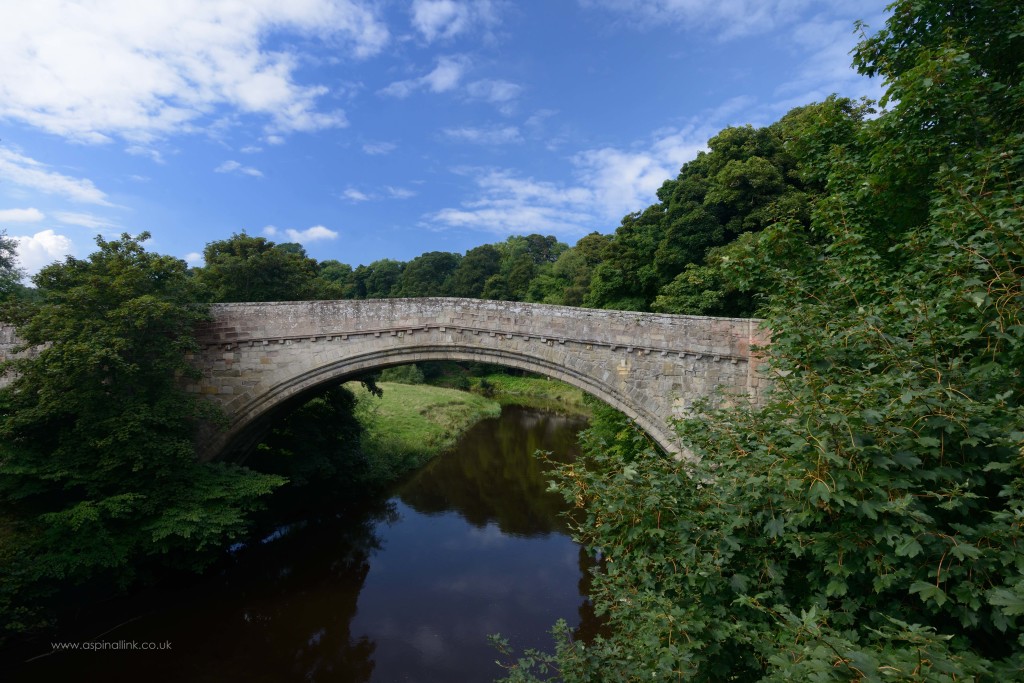
Twizel Bridge 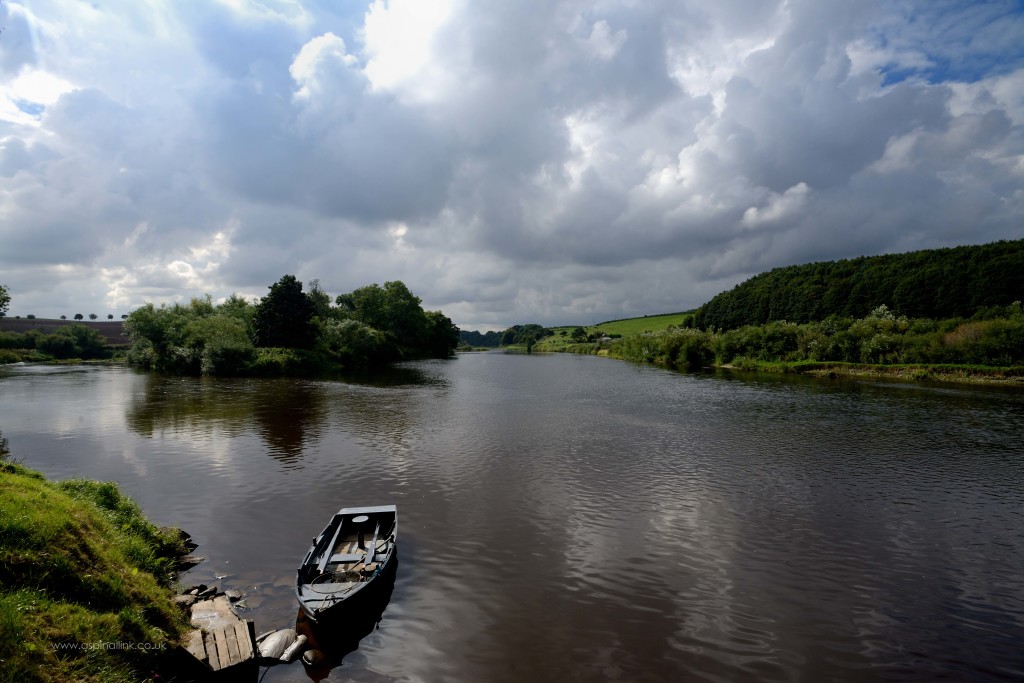
Till and Tweed
Formerly two separate (warring) estates, Ford and Etal were united under single ownership by the 1st Baron Joicey of Chester-le-Street who purchased first the Ford Estate in 1907 and, the Etal estate the following year. Although united in ownership, each has its own, very distinctive architectural style.
The layout of Ford village as it stands today, owes much to Louisa, Marchioness of Waterford who inherited the estate when her husband died. Lady Waterford provided Ford with a new schoolroom and housing for her tenants. We enjoyed a visit to Lady Waterford Hall and we had a bite to eat at the café/shop in the green.
To visit Etal, we decided to park at Hatherslaw Visitor’s Centre and take the Heatherslaw Light Railway, a journey on a cute open-sided steam train, which will make the day of many a small boy and grown man. On disembarking, we walked past Etal Castle, through the village and along a country lane. After our fellow passengers had left, we headed to the Lavender Tea Rooms for lunch. If you time it right, you can have the place to yourself before the next train-load arrives. An alternative dining option is The Black Bull a pretty white-washed, thatched pub.
Back at the cottage, we enjoyed an evening relaxing in the garden, retreating to the Summer House as the evening cooled and then had a peaceful night’s sleep where I dreamt of a bygone era and simpler times.
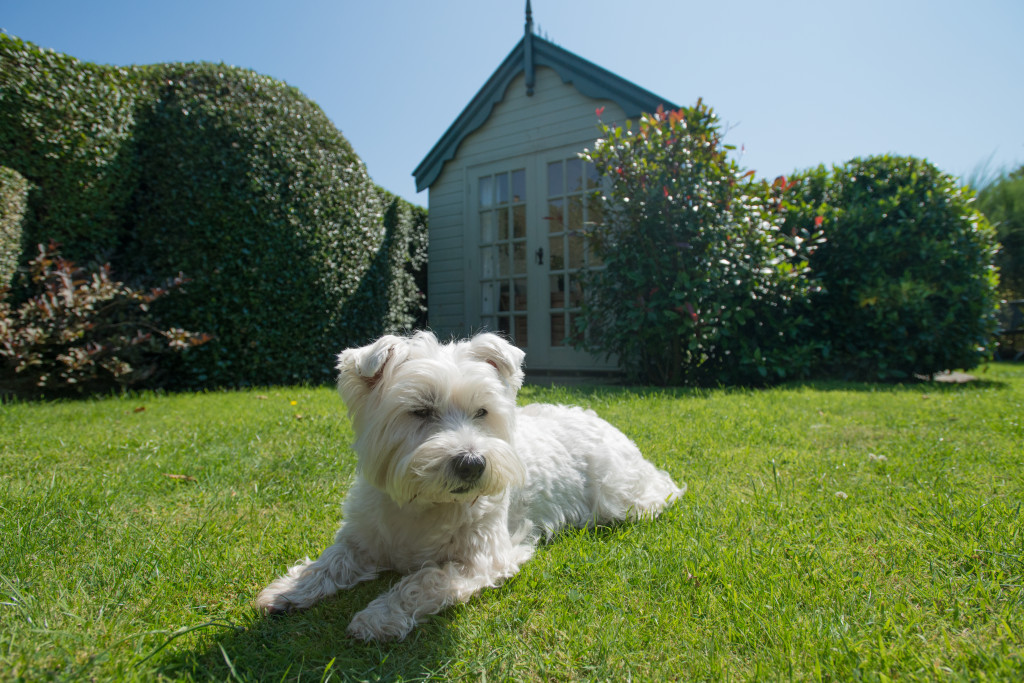
On our last evening, we enjoyed dining at the nearby Collingwood Arms. Thanks to the glorious weather, we were able to take advantage of being able to dine in their picturesque walled garden, where we chatted amiably to some friendly guests whilst enjoying a fabulous meal from the À la carte menu. It was the end to a fabulous short break.
Further information
- The Cottage, Branxton
- The history of the Battle of Flodden
- Twizel Bridge
- Ford and Etal Estates
- Hatherslaw Visitor’s Centre
- Hatherslaw Mill
- Heatherslaw Light Railway
- Collingwood Arms
Photographs courtesy of Richard Aspinall. Copyright Aspinall Ink 2014.
